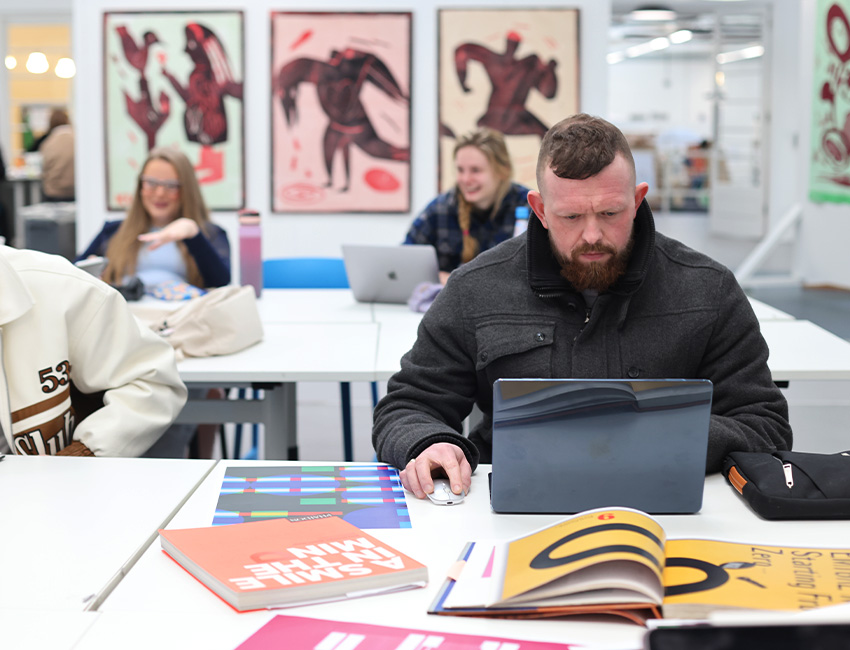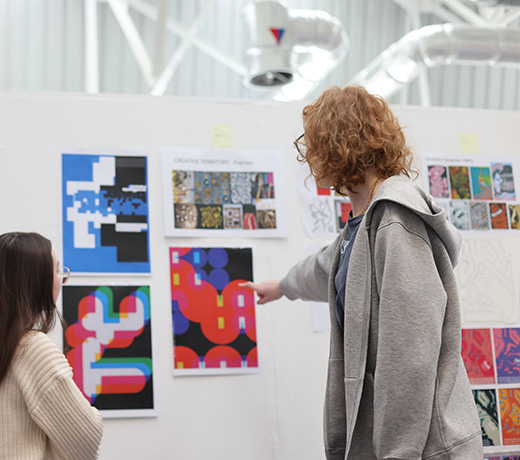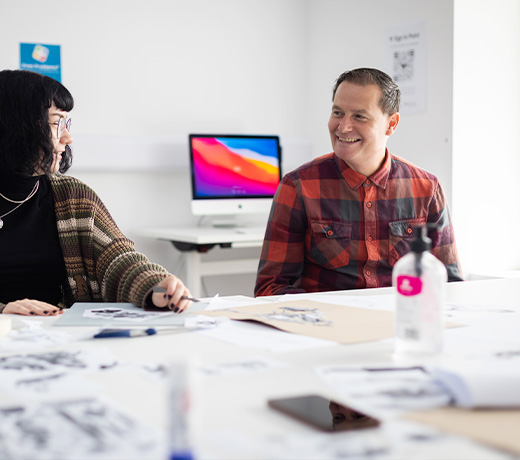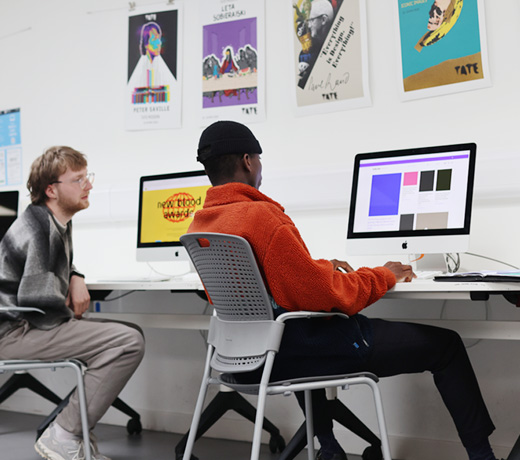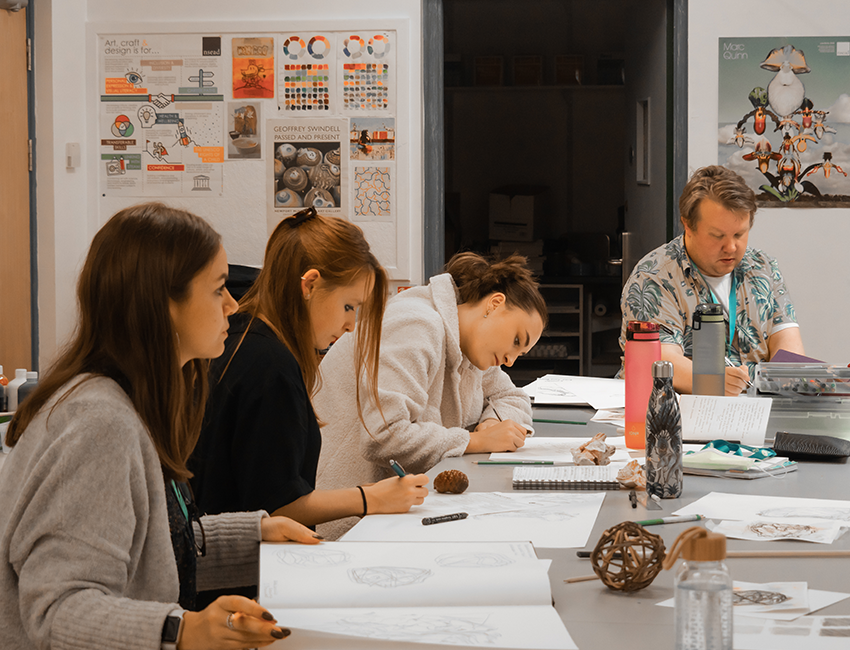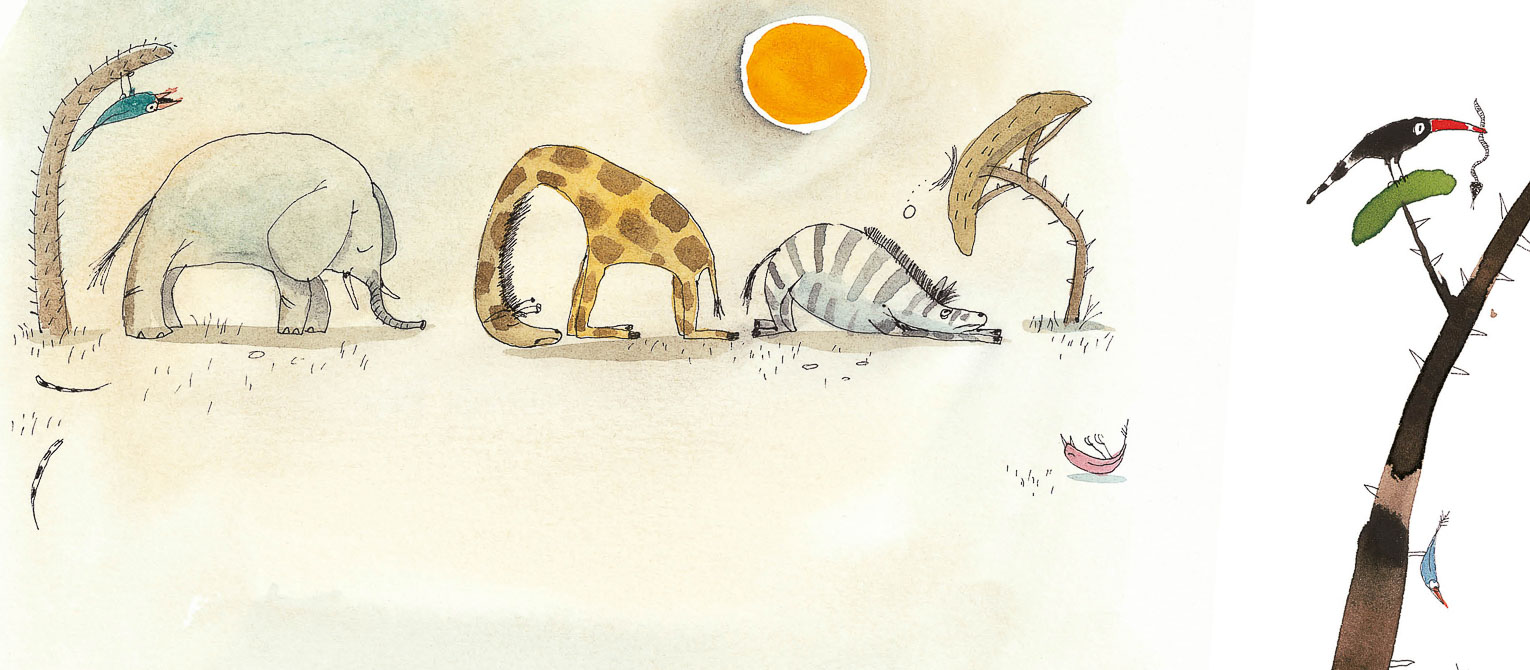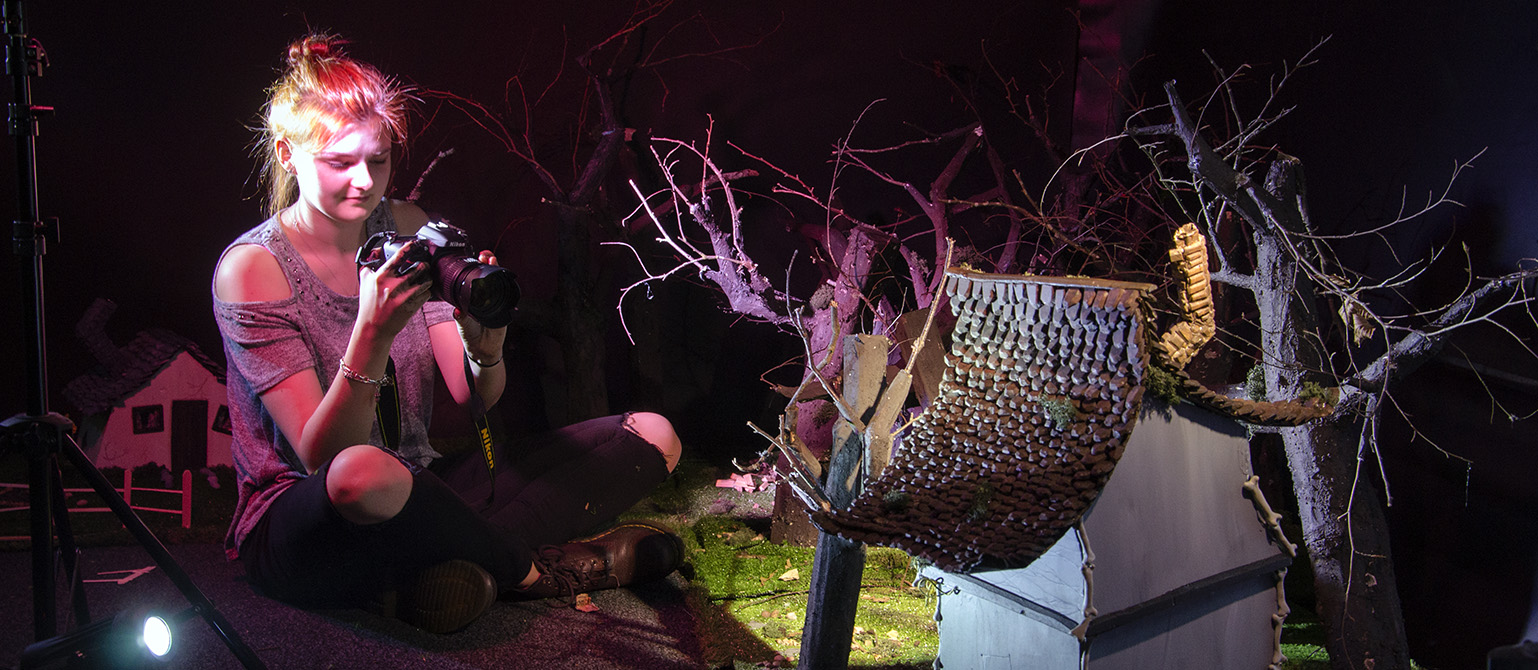From day one it will feel like you have joined a professional design agency. By studying a blend of theory and practice, you’ll learn to tell visual stories to inspire audience in new and immersive ways through meaningful creative designs.
in the UK for art and design graduate prospects
of Design students said that teaching staff make the subject engaging
First for jobs
The University of Worcester is first in the UK for sustained employment, further study or both, five years after graduation (excluding specialist institutions) - Longitudinal Educational Outcomes Survey 2024. Read more.
Overview
Our BA in Graphic Design is dedicated to developing the next generation of creative experts. This is a contemporary and innovative course where learning is centred around creative problem-solving and originality, where you’ll learn to develop fresh, cutting-edge ideas.
You’ll study a blend of practice and theory-based learning strategies including an agency-style creative process. This will provide a framework for research, the development of technical skills, and critical thinking. Learn to tell meaningful visual stories to inspire audiences in new and immersive ways through experimenting with your designs and develop your design knowledge across a wide range of projects.
In our state-of-the-art studios, you’ll sharpen your specialist design and art direction abilities across visual platforms including brand identity, editorial, digital, motion, packaging, environments, and advertising. Each specialist is underpinned with solid principles in aesthetics, layout, typography, imagery, and language. This will encourage you to become open, collaborative, and interdisciplinary brand-world thinkers.
Studio practice, interactive workshops, lectures and seminars are key to teaching you all the fundamental skills to develop as a professional graphic designer. Supported by industry experts and with access to cutting-edge facilities, you’ll work with clients on live project briefs, enter international design awards, and complete a portfolio of work to exhibit at the final year exhibition.
Course content
Each year you will study a mix of mandatory and optional modules. This flexibility lets you explore different styles and try new mediums to establish your own identity as a graphic design.
Optional modules will run if they receive enough interest. It is not guaranteed that all modules will run every year.
Optional modules
Careers
Throughout this course, you will receive specialist creative careers advice from your lecturers, external creative directors, and our Careers and Employability team to help you prepare for your career.
You’ll develop highly sought after skills across all areas of Graphic Design that will enable you to explore and excel in a range of careers. By the time that you graduate, you’ll be prepared with interview techniques and have a CV, design portfolio, and website ready to enter industry.
You could find work as a:
- Advertising arts director
- Agency graphic designer
- Brand strategist
- Creative director
- Digital web designer
- Exhibition designer
- Marketing director
- Packaging designer
- Social media creator
- Motion designer
Course highlights
Teaching and Assessment
You’ll explore graphic design through studio tutorials, group discussion, seminars and workshops.
Your assessments will help prepare you for your career as a graphic designer. You’ll produce a professional portfolio, zines, online projects, proposals, learning journals, reflective pieces, and solo and collaborative exhibitions.
Teaching and assessment contents
You are taught through a combination of: taught sessions, workshops, individual tasks and occasional small and large group tasks. In addition, you may also witness visiting speakers and client meetings in years 2 and 3 as we scale up your involvement in real/live projects.
In addition, meetings with personal academic tutors are scheduled on at least 4 occasions in the first year and three occasions in each of the other years of a course.
You have an opportunity to develop your existing skills in design, visualising, mac skills (around the latest versions of the Adobe Suite) as well as your skills in liaising with and presenting to clients. As well as your academic learning we'll look to put on supporting/linked study visits where appropriate, visiting lectures from professionals across a range of related mediums and client meets and presentations.
You'll also have the opportunity to attend specialist trips to events, museums and sites linked to your studies.
Entry requirements
UCAS tariff points required: 104
| Qualification | Grade |
|---|---|
| A-level | BCC |
| BTEC National Extended Diploma | DMM |
| T-level | Merit |
Any questions?
If you have any questions about entry requirements, please call our Admissions Office on 01905 855111 or email admissions@worc.ac.uk.
Fees
Fees contents
UK and EU students
The Government has announced that it will increase tuition fees and maintenance loans by 3.1% from the 2025/26 academic cycle. Subject to approval, the University intends to increase our tuition fees in line with this and as per our terms and conditions. This means that from September 2025 the standard fee for full-time home and EU undergraduate students on BA/BSc/LLB degrees and FdA/FdSc degrees will be £9,535 per year for new and continuing students.
For more details on course fees, please visit our course fees page.
International students
The standard tuition fee for full-time international students enrolling on BA/BSc/LLB degrees and FdA/FdSc degrees in the 2025/26 academic year is £16,700 per year.
For more details on course fees, please visit our course fees page.
How to apply
How to apply contents
Applying through UCAS
UCAS is the central organisation through which applications are processed for full-time undergraduate courses in the UK.
Read our how to apply pages for more information on the application process, or if you’d like to apply for part-time study.
Graphic Design BA (Hons) - W210
Contact
If you have any questions, please get in touch. We're here to help you every step of the way.

Admissions Office
admissions@worc.ac.uk01905 855111More to explore
Open Days
Visiting us is the best way to get a feel for student life at the University of Worcester.
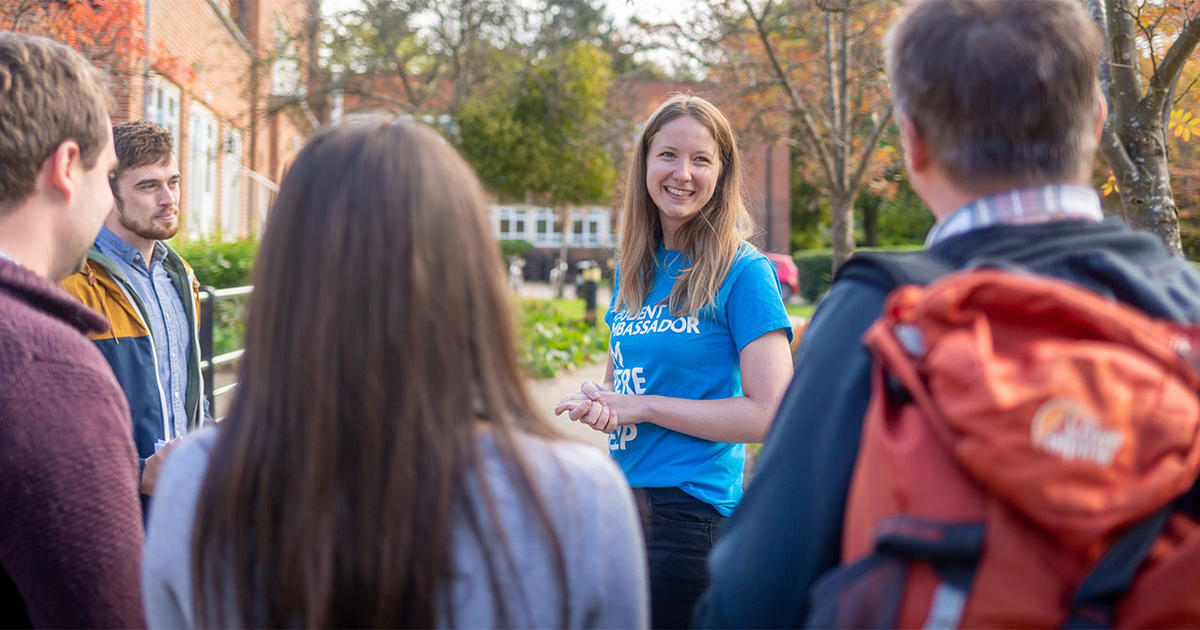
The City of Worcester
Worcester is a welcoming university city with great transport links and plenty of student parking.

Accommodation
Benefit from our accommodation guarantee. We have rooms on campus to suit every budget including en-suite options.

